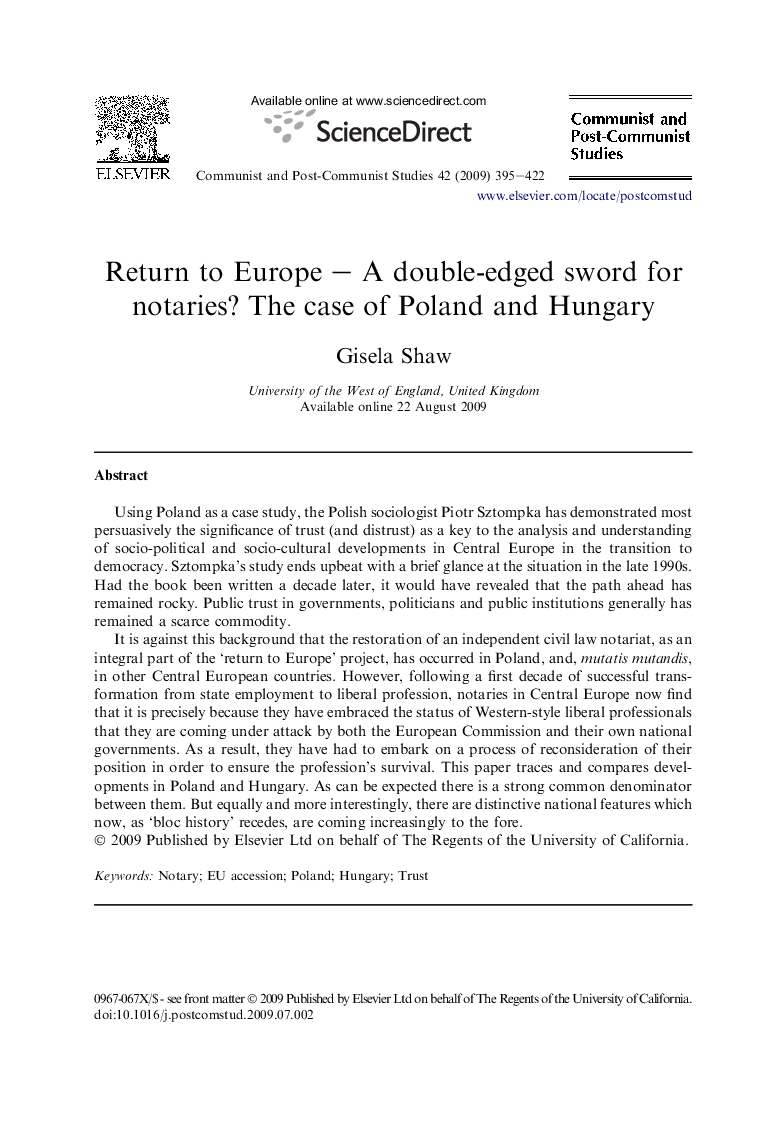| کد مقاله | کد نشریه | سال انتشار | مقاله انگلیسی | نسخه تمام متن |
|---|---|---|---|---|
| 1046720 | 945101 | 2009 | 28 صفحه PDF | دانلود رایگان |

Using Poland as a case study, the Polish sociologist Piotr Sztompka has demonstrated most persuasively the significance of trust (and distrust) as a key to the analysis and understanding of socio-political and socio-cultural developments in Central Europe in the transition to democracy. Sztompka's study ends upbeat with a brief glance at the situation in the late 1990s. Had the book been written a decade later, it would have revealed that the path ahead has remained rocky. Public trust in governments, politicians and public institutions generally has remained a scarce commodity.It is against this background that the restoration of an independent civil law notariat, as an integral part of the ‘return to Europe’ project, has occurred in Poland, and, mutatis mutandis, in other Central European countries. However, following a first decade of successful transformation from state employment to liberal profession, notaries in Central Europe now find that it is precisely because they have embraced the status of Western-style liberal professionals that they are coming under attack by both the European Commission and their own national governments. As a result, they have had to embark on a process of reconsideration of their position in order to ensure the profession's survival. This paper traces and compares developments in Poland and Hungary. As can be expected there is a strong common denominator between them. But equally and more interestingly, there are distinctive national features which now, as ‘bloc history’ recedes, are coming increasingly to the fore.
Journal: Communist and Post-Communist Studies - Volume 42, Issue 3, September 2009, Pages 395–422